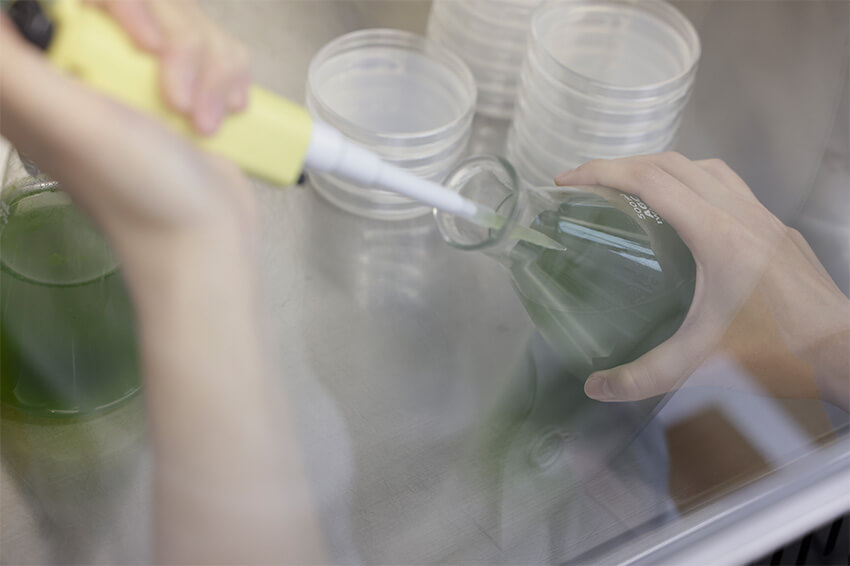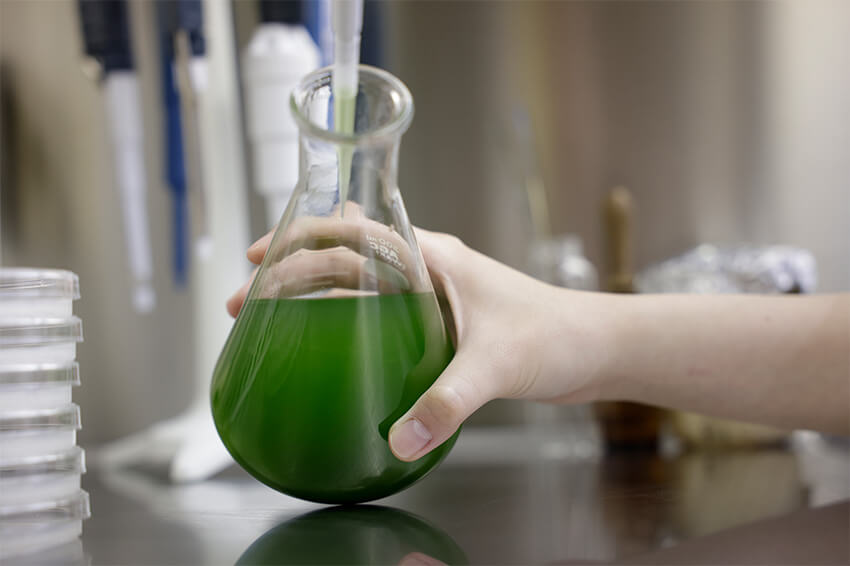Our Technologies
This page explains the proud chemical technologies that Nippon Soda has developed over time,
with pictures and diagrams.
Solving the future with the circulation of technologies
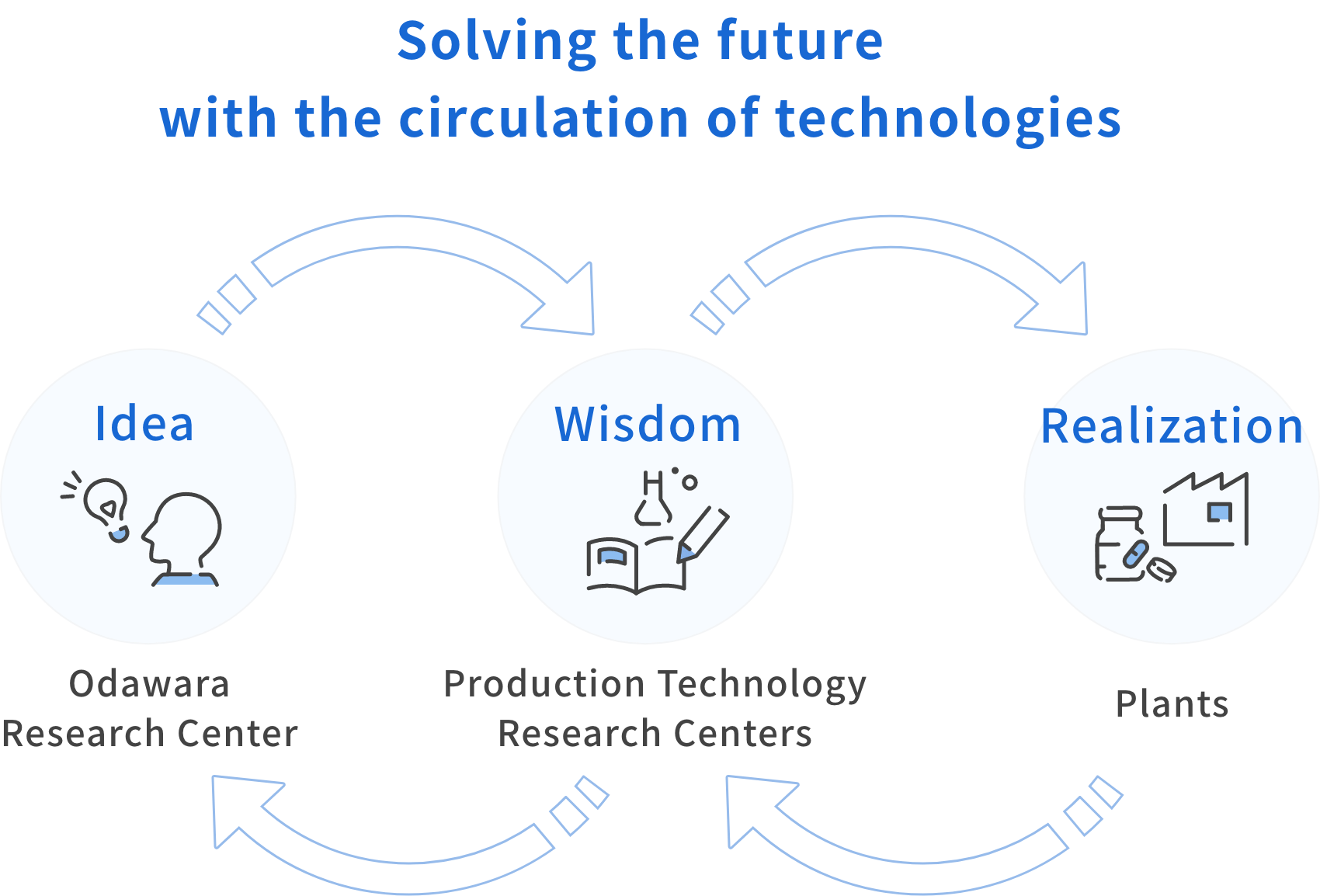
Main Products・Technology Development Diagram
This diagram summarizes the relationship between the three main businesses and main products that have grown along with Nippon Soda's development.
Main Products・
Technology Development
Diagram
From 100 year history
and overview of history

Core technologies to generate competitiveness ・Platform technologies to support that
Nippon Soda possesses fundamental technologies to produce and handle the special chemical raw materials, which is developed in soda industry, and to synthesize general organic compounds. Our various businesses are based on the fundamental technologies. And the key feature of our core technologies related to the development of the agrochemicals is that they are also based on these fundamental technologies. The core technologies are the source of our competitiveness in agrochemicals industry.
- Core technologies for
the development
of agrochemicals - Platform technologies
for organic synthesis
in general - Platform technologies
for special chemical
raw materials
Core technologies for the development of agrochemicals
Core technologies
for the development of agrochemicals
Platform technologies for organic synthesis in general
Platform technologies
for organic synthesis in general
Platform technologies for special chemical raw materials
Platform technologies
for special chemical raw materials
 Production and Handling of poisonous and deleterious substances
Production and Handling of poisonous and deleterious substances Production and handling of water-prohibited compounds
Production and handling of water-prohibited compounds Examples of hazardous gases
Examples of hazardous gases Pharmaceutical grade manufacturing technology and quality control
Pharmaceutical grade manufacturing technology and quality control Pharmaceutical formulation technology
Pharmaceutical formulation technology Bactericides and antimicrobial agents, Biocide product development
Bactericides and antimicrobial agents, Biocide product development
Molecular design to enhance agent efficacy
We also conduct computational chemistry and chemoinformatics research to rapidly discover new candidate compounds for agrochemicals.
We use molecular simulation and machine learning to analyze the relationship between the structure of compounds and their biological activities, and between the structure of compounds and their physicochemical properties.
These computational analyses assist in guiding rational molecular design.
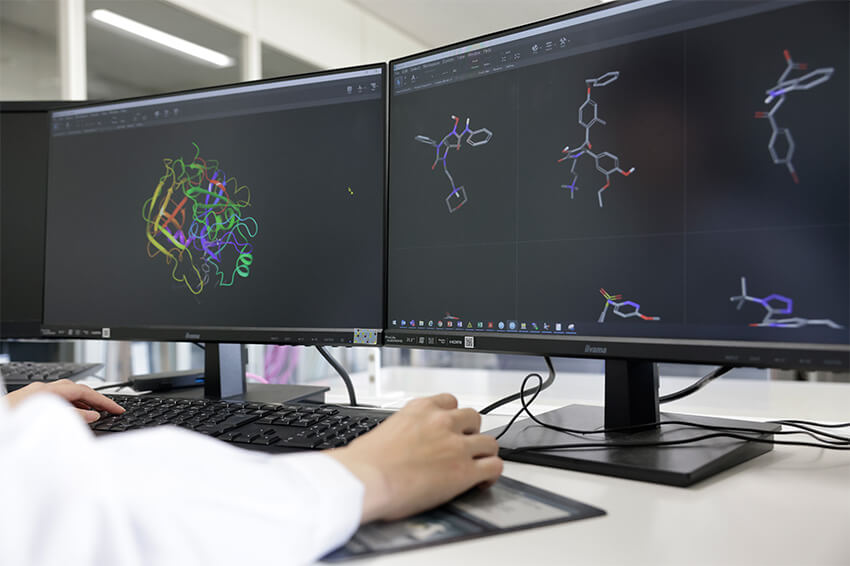
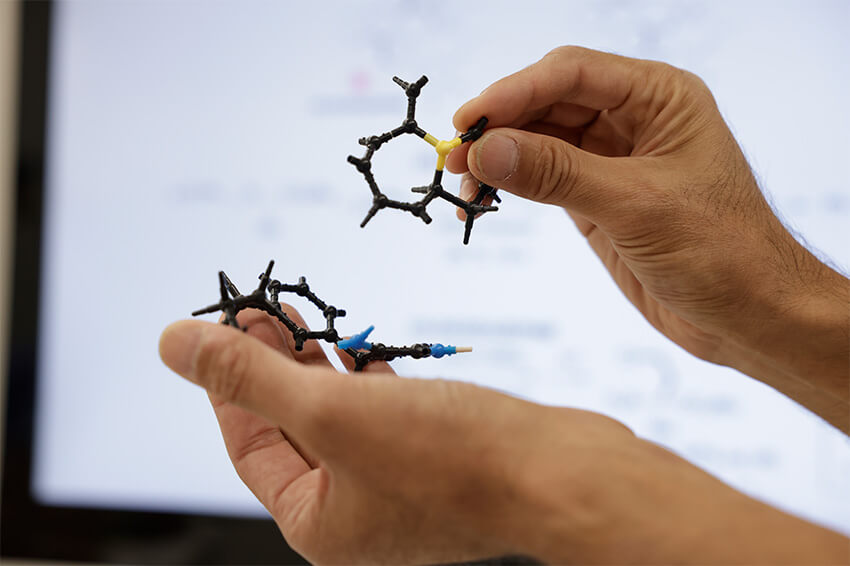
Evaluation of agrochemical efficacy in our own fields
"Evaluation of agrochemical efficacy in our own fields"
In order to conduct more practical biological research on fungicides, insecticides, acaricides, herbicides and biopesticides, it is necessary to carry out tests under conditions similar to practical situations. Considering various environmental conditions and crop species, we conduct tests in several fields in Japan and abroad.
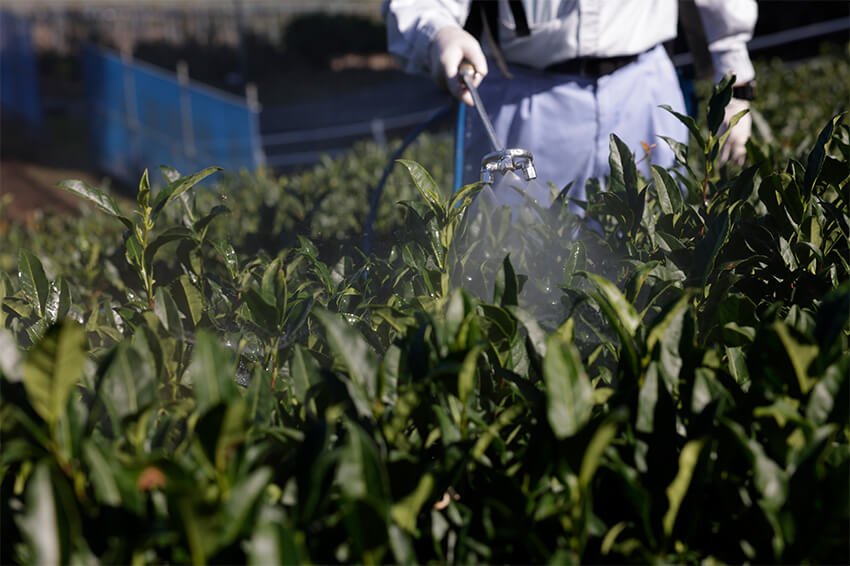
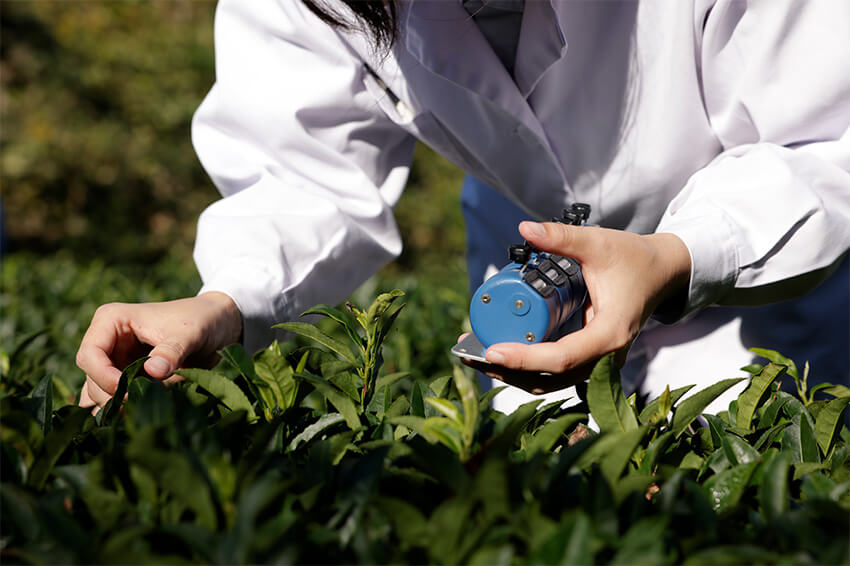
Formulations tailored to the properties of agrochemicals
Agrochemicals formulations come in many dosage forms, from solid to liquid, such as granules and liquid agents. In addition, agrochemicals formulations contain surfactants and bulking agents for effectiveness. We start our research with a few dozen milligrams of a new active ingredients. We are researching to create environment- and people-friendly formulations by maximizing the ability of the active ingredients under the application conditions.
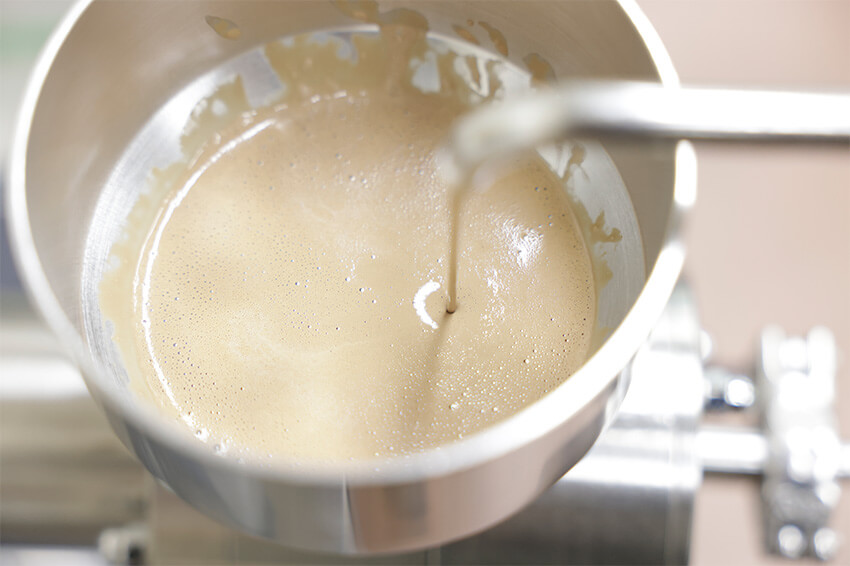
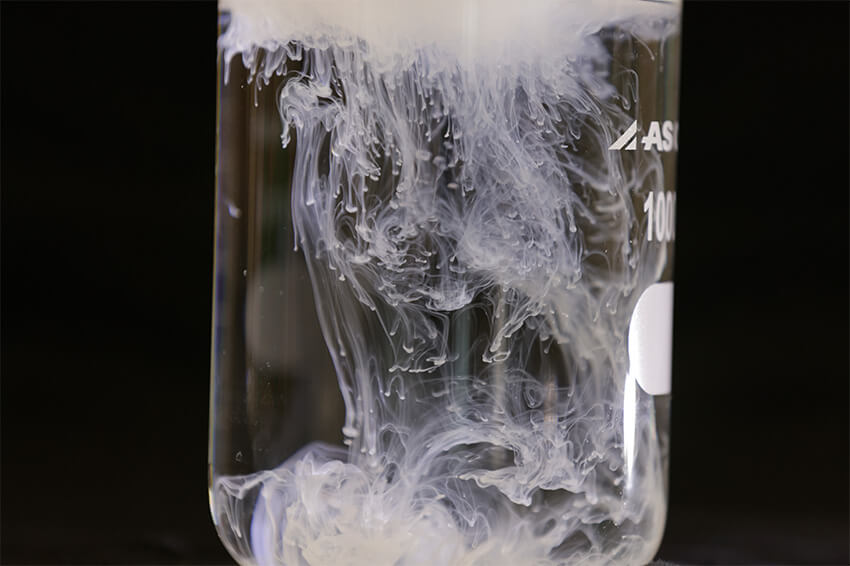
Bioactivity evaluation
We evaluate the bioactivity of newly synthesized compounds against pathogens, pests, and weeds through laboratory and pot tests. We use efficient screening methods for a large number of compounds to determine their potential as fungicides, insecticides, miticides, and herbicides. We also use biochemical, physiological, and molecular biological methods to create agrochemicals with new actions.
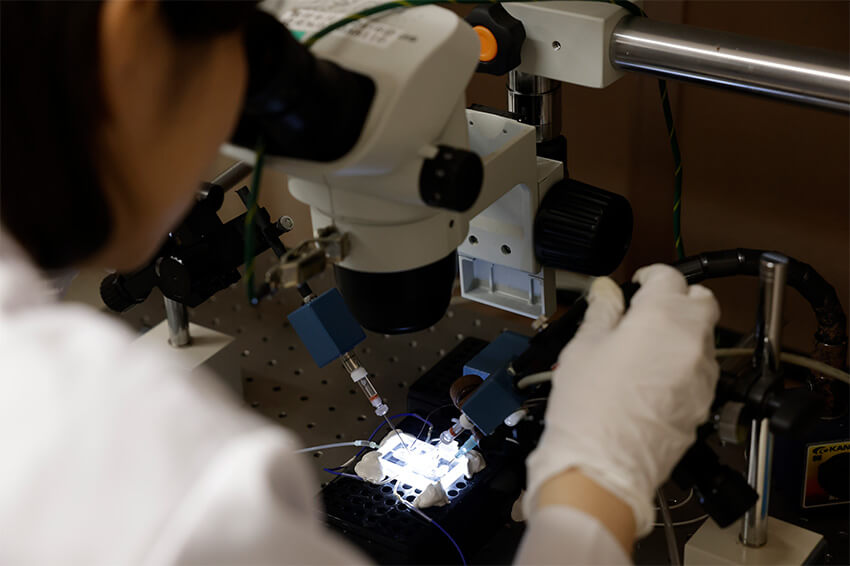
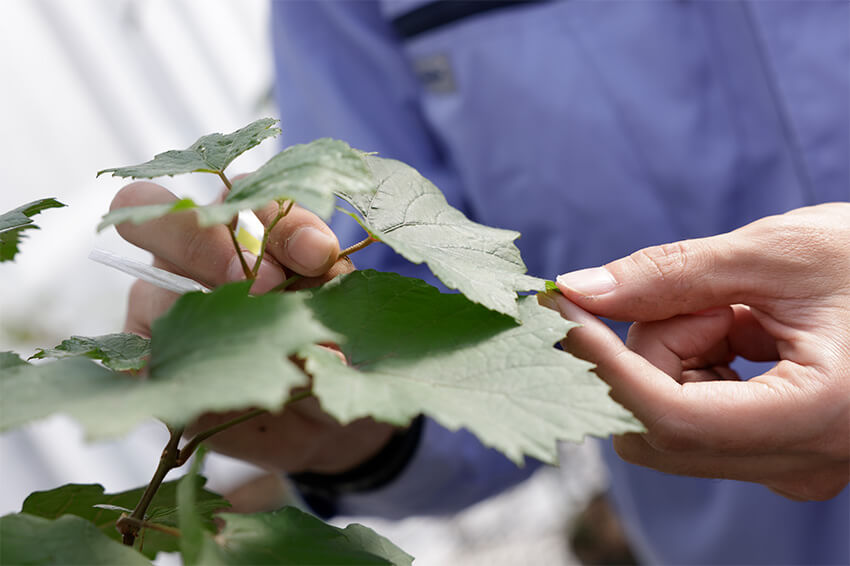
Pharmacology, Toxicity, Pharmacokinetic, and Accumulation evaluation
A wide range of tests are required in pharmacological and toxicological research to estimate and evaluate the effects of agrichemicals on the human body. We are involved in various phases of development research to develop safe agrichemicals. Additionally, in order to investigate the effects of agrichemicals on exposure, we investigate and analyze the behavior and metabolites/degradation products in animals, plants, and the environment in pharmacokinetic and accumulation evaluation. . These results are used to evaluate the safety of agrichemicals.

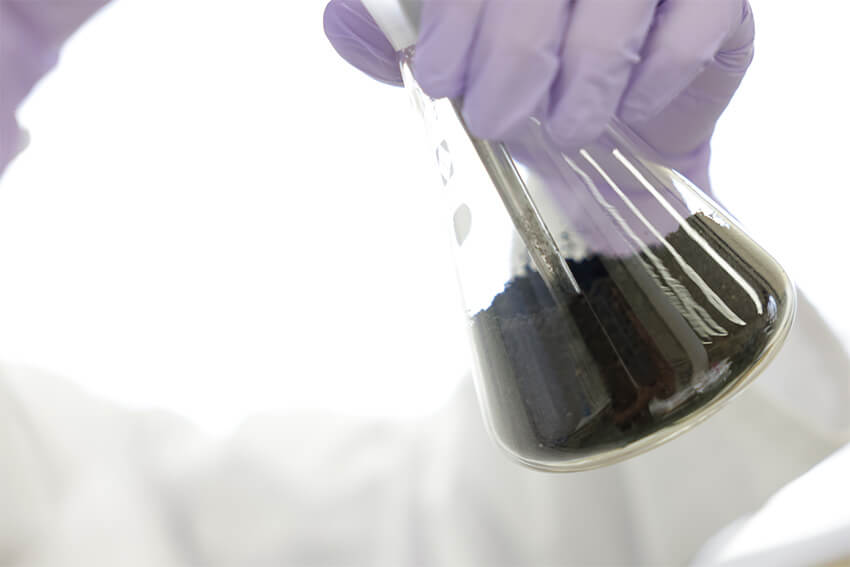
Design and synthesis of organic compounds
In the search for new pesticides, we start with seed and lead compounds and optimize them using organic synthetic chemistry. In the process, we must resolve various issues such as biological activity, pharmacodynamics, animal and environmental toxicity, and novelty.
In order to explore the factors involved in these issues and design appropriate compounds that can be solved, we conduct daily synthetic research while holding discussions with researchers in biological and analytical systems.
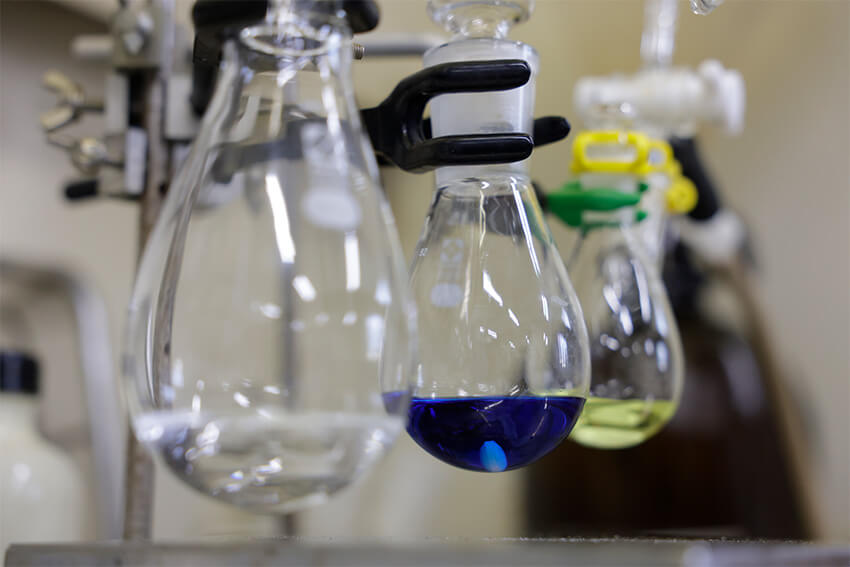
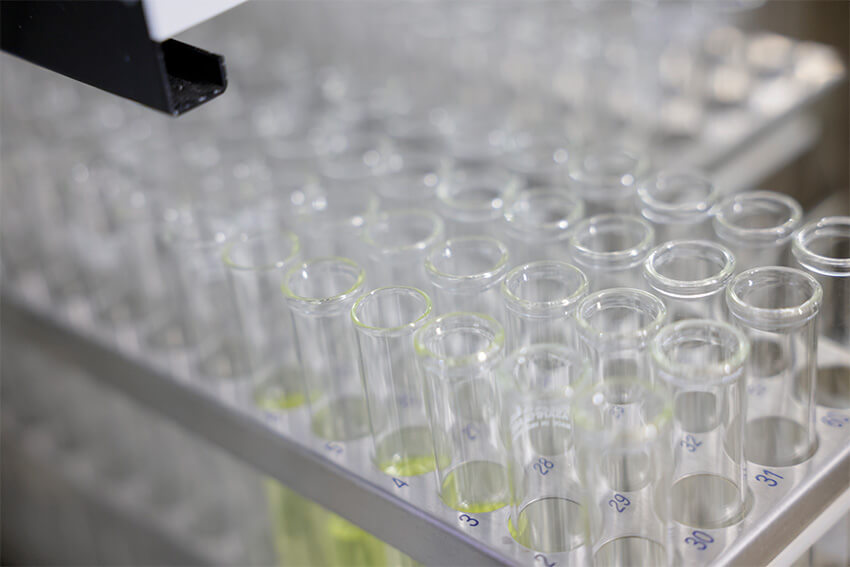
Analysis and characterization of organic compounds
We support various businesses for the research and development, marketing and dissemination of materials and agrochemicals. We develop analytical evaluation methods and acquire new analytical techniques related to various evaluation technologies.
Accelerating Rate Calorimeter
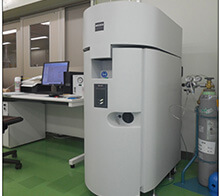
Capillary Electrophoresis
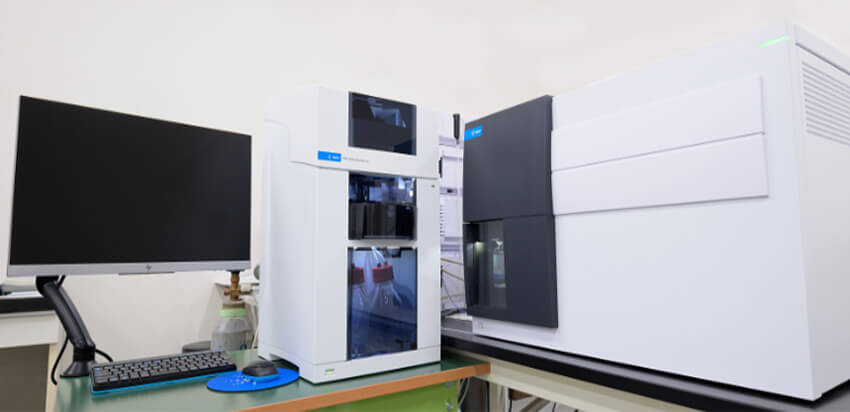
Flow reaction, Low temperature reaction and High pressure reaction
We have developed synthesis processes for special conditions such as flow, low temperature, and high pressure reactions and are applying them to actual manufacturing plants.
Related product information can be found on the following business pages.
Specialty ChemicalsTypical reaction examples
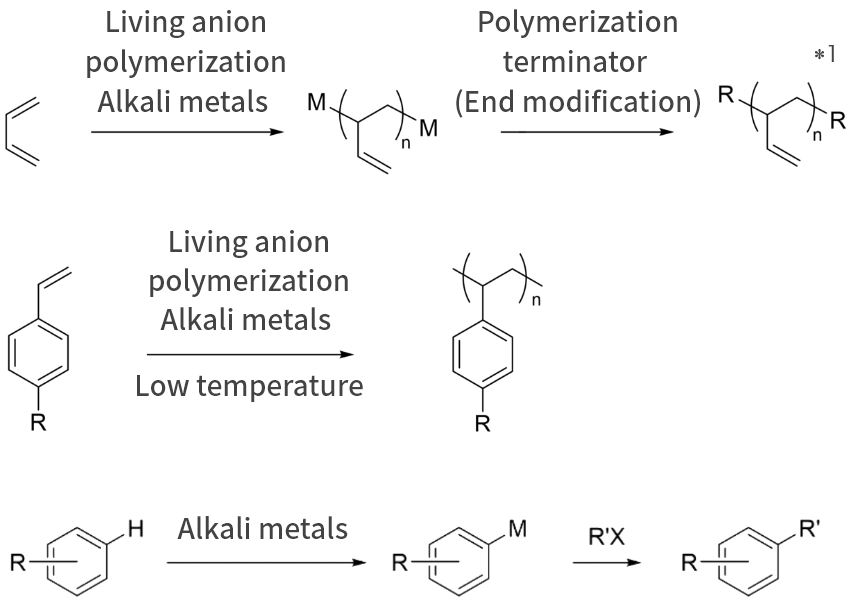
Related product information can be found on NISSO-PB pages.
Polymer synthesis and Anion polymerization
In addition to developing high-performance materials utilizing our company's proprietary products of polybutadiene and SBS, we are also developing new polymers with excellent material properties such as high heat resistance and low dielectric properties by applying our company polymerization technology as next-generation high-speed communication materials.
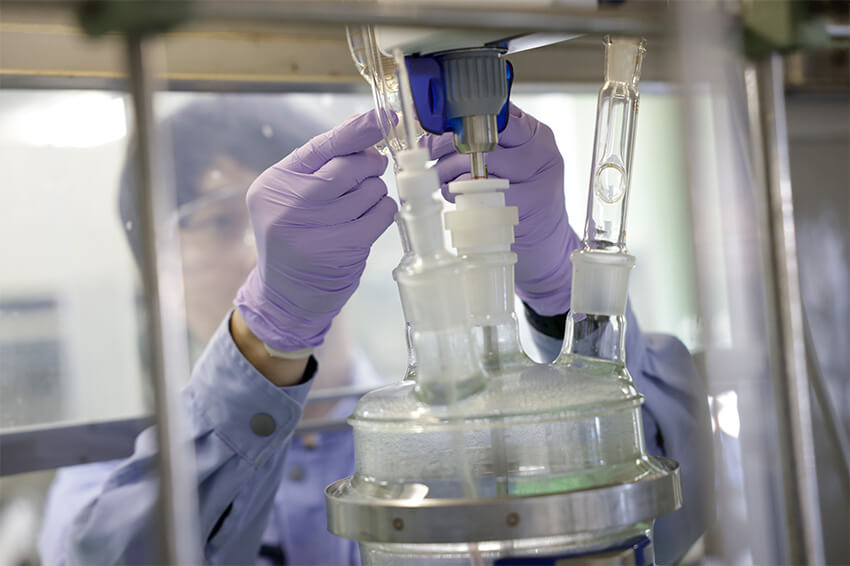
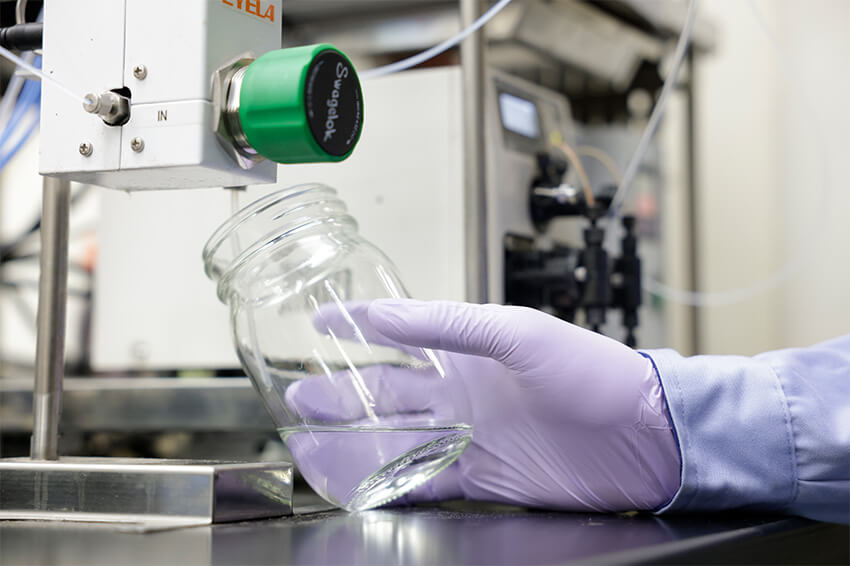
We mainly synthesize polymers utilizing living anionic polymerization technology.
Related product information can be found on the following business pages.
Specialty ChemicalsTypical reaction examples
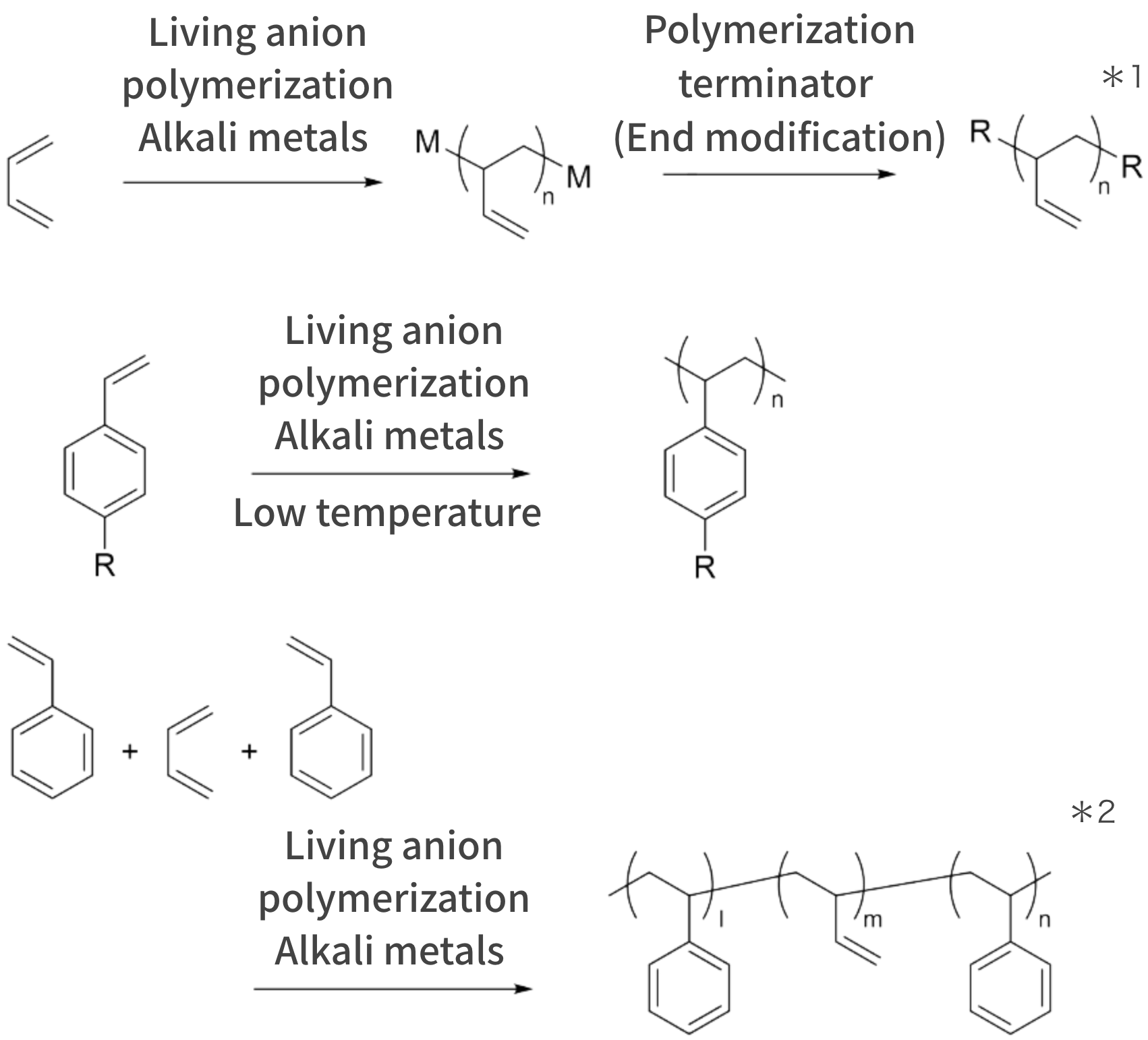
*1 Related product information can be found on NISSO-PB pages.
*2 Related product information can be found on Liquid_1,2-SBS.pdf pages.
Production and Handling of poisonous and deleterious substances
We safely produce and handle a large number of poisonous substances.
- Registration for poison substances Manufacture 5 compounds, including POCl3 and NaCN
- Registration for deleterious substances Manufacture 43 compounds, including Cl2 and NaOH
- We also handle many other compounds.
Production and handling of water-prohibited compounds
We safely produce and handle a large number of water-prohibited compounds.
Related product information can be found on the following business pages.
Specialty ChemicalsTypical production and handling examples
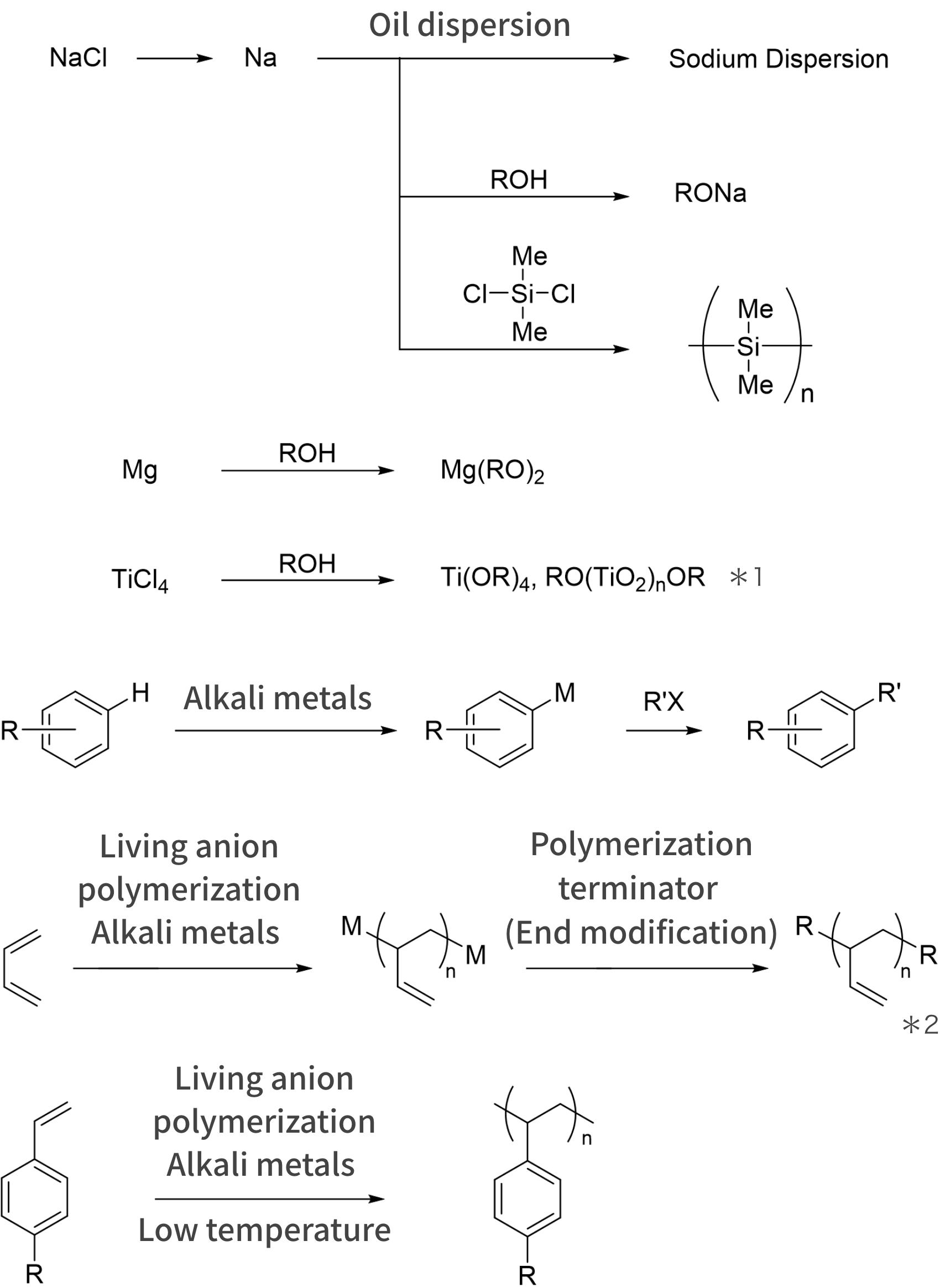
*1 Related product information can be found on Organic Titanate pages.
*2 Related product information can be found on NISSO-PB pages.
Examples of hazardous gases
Many hazardous gases, such as chlorine and its derivatives, hydrogen cyanide, and ethylene oxide, are produced safely and applied to unique reactions.
Related product information can be found on the following business pages.
Production of chlorine and reaction examples

Examples of reactions using hydrogen chloride
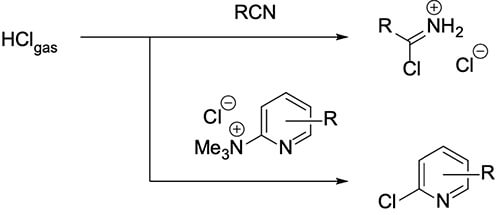
Examples of reactions using phosgene
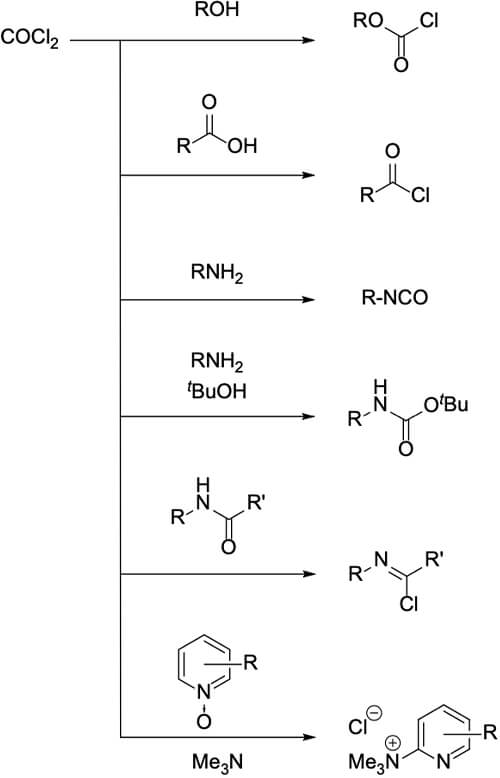
Examples of reactions using hydrogen cyanide

*1 Related product information can be found on Chlor-Alkali pages.
*2 Related product information can be found on Pharmaceuticals pages.
Examples of reactions using ethylene oxide
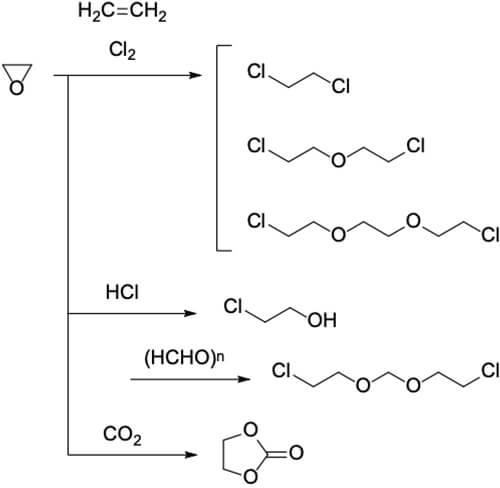
Examples of reactions using propylene oxide

*3 Related product information can be found on Pharmaceuticals pages.
Pharmaceutical grade manufacturing technology and quality control
We produce a large number of active pharmaceutical ingredients and pharmaceutical intermediates with the pharmaceutical manufacturing technology and quality control system we have developed over many years.
Related product information can be found on the following business pages.
PharmaceuticalsTypical reaction examples
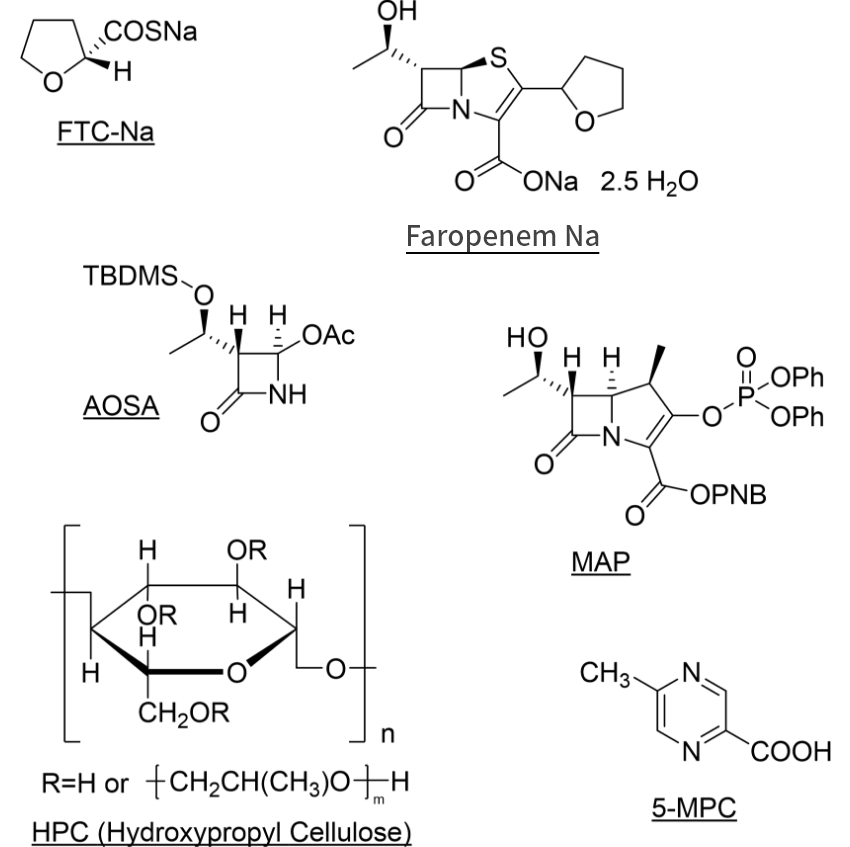
Bactericides and antimicrobial agents, Biocide product development
Biocide-related products are chemicals that control pests (Viruses, bacteria, molds, algae, termites, etc.) in the general industrial sector, and are applied to various fields such as paints, plastics, rubber, paper pulp, wood, building materials, and textiles. Utilizing our own agrochemical development technology, we combine active ingredient search, formulation technology, bioactivity evaluation, and analytical evaluation technology to develop products that respond flexibly to user needs.
